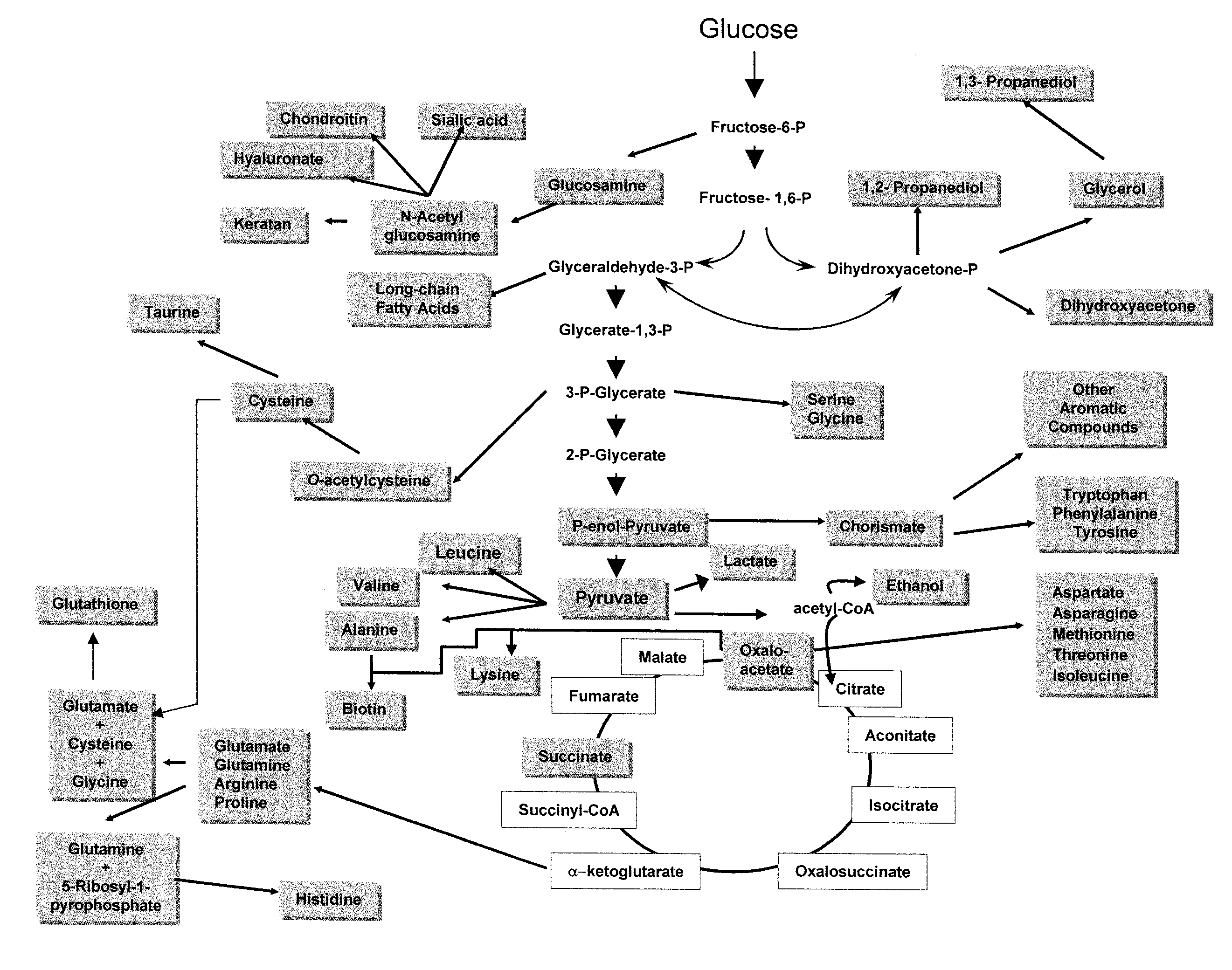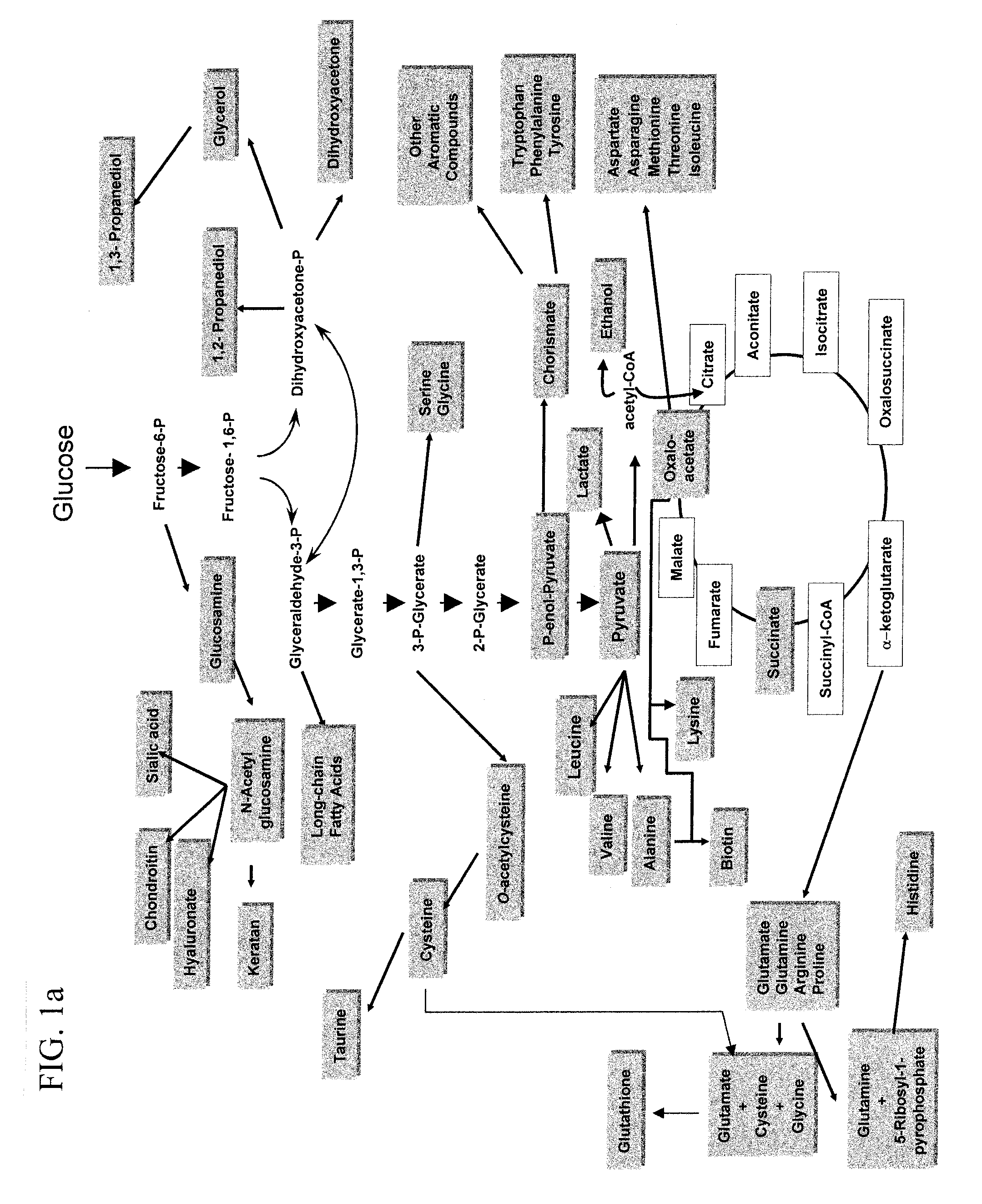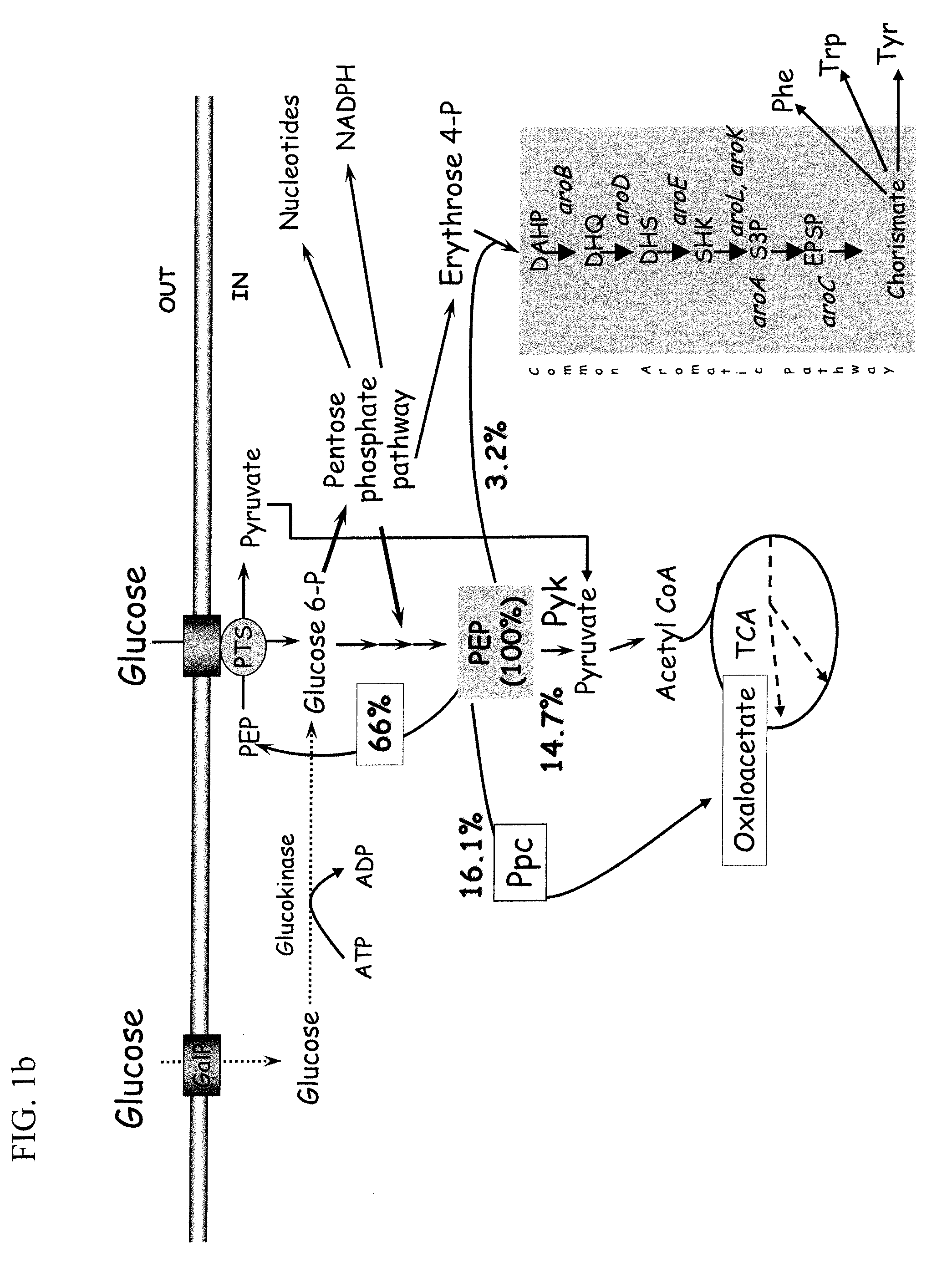Glucose Transport Mutants For Production Of Biomaterial
- Summary
- Abstract
- Description
- Claims
- Application Information
AI Technical Summary
Benefits of technology
Problems solved by technology
Method used
Image
Examples
example 1
Construction of PTS− E. coli Strains with trc Promoters
[0171]A). Construction of the loxP-CAT-loxP-trc Cassette, Plasmid pTrcM42.
[0172]Linear DNA was obtained from plasmid pTrc99a (Pharmacia) digested with the restriction enzymes HindIII and NcoI according to the suppliers instructions (New England Biolabs). After purification, the ends of the digested DNA were filled by T4DNA polymerase as described by Sambrook et al. supra. The resulting blunt-end, linear DNA was circularized according standard protocols and transformed into E. coli TOP-10 competent cells (Invitrogen, Carlsbad, Calif.). Cells were plated on Luria-agar (LA) plates (LB medium containing 5 g / L yeast extract; 10 g / L tryptone, and 10 g / L NaCl plus 2% agar) containing 50 micrograms / ml of carbenicillin. After 16 hrs. of incubation at 37° C., four colonies were chosen for further analysis. Purified plasmid DNA was obtained from these colonies and subjected to restriction enzymes analysis. It was confirmed that the 4 colon...
example 2
Constitutive Expression of galP Encoding Galactose Permease from the Chromosome of a Strain Lacking a PEP-PTS System for Glucose Uptake
[0183]The production of glycerol and 1,3-propanediol in an PTS− / Glu+ E. coli strain having a Glu+ phenotype was determined. The PTS− / Glu+ E. coli strain was obtained by transformation of the PTS− / Glu− strain (KLpts7) with pMCGG (example 1G) by standard procedures (Sambrook et al. supra) to create KLpts7 / pMCGG or by chromosomal integration of the trc promoter to replace the endogenous native galP promoter in KLpts7 creating a KlgalP-ptrc (example 1E). Both KLpts7 / pMCGG and KlgalP-ptrc were transformed by standard procedures (Sambrook et al., supra) with a plasmid carrying the pathways for glycerol and 1,3-propanediol production. The production of cell mass, glycerol and 1,3-propanediol was tested in fermentations.
[0184]A standard fermentation was carried out as follows: A 500 ml seed flask was grown at 35° C. in standard 2YT medium (Sambrook et al. su...
example 3
Constitutive Expression of galP and glk from the Chromosome of a PTS− Strain
[0189]The PTS− / Glu− strain, KLpts7 was made Glu+ by integration of the trc promoter at the galP and glk target sites to create strain KLGG and reference is made to example 1 above. The strain was transformed by standard procedures with pSYCO101. The production of cell mass, glycerol and 1,3-propanediol was tested in a standard fermentation (see example 2).
[0190]As illustrated in FIGS. 11 and 121 in comparison to KlgalP-trc, KLGG grew more rapidly (at T 33.9, KLGG had obtained an OD600 of 24.7 while the OD600 of KlgalP was 19.6). KLGG produced 70 g / L of 1,3-propanediol compared with 61 g / L produced by strain KlgalP-trc. Additionally, the peak concentration was reached earlier in the KLGG fermentation (56.8 h compared to 62.7 hours for KlgalP). The constitutive expression of galP and glk by chromosomal integration of the trc promoter therefore produces more 1,3-propanediol in less fermentation time than the co...
PUM
| Property | Measurement | Unit |
|---|---|---|
| Fraction | aaaaa | aaaaa |
| Fraction | aaaaa | aaaaa |
| Frequency | aaaaa | aaaaa |
Abstract
Description
Claims
Application Information
 Login to View More
Login to View More - R&D
- Intellectual Property
- Life Sciences
- Materials
- Tech Scout
- Unparalleled Data Quality
- Higher Quality Content
- 60% Fewer Hallucinations
Browse by: Latest US Patents, China's latest patents, Technical Efficacy Thesaurus, Application Domain, Technology Topic, Popular Technical Reports.
© 2025 PatSnap. All rights reserved.Legal|Privacy policy|Modern Slavery Act Transparency Statement|Sitemap|About US| Contact US: help@patsnap.com



